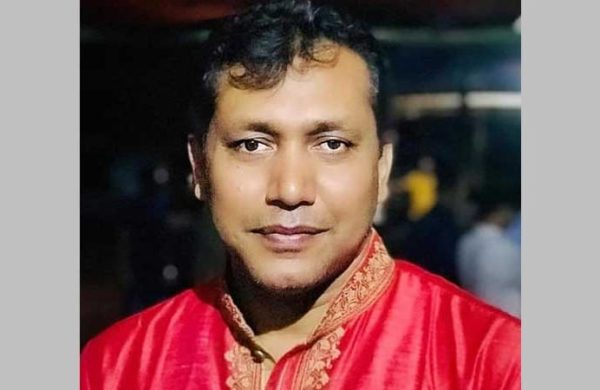‘Body and the Map’ exhibits artworks from July Movement
- Update Time : Friday, December 6, 2024

Entertainment Desk
A new exhibition at Bengal Foundation, “Body and the Map”, collects an important group of artworks related to the July/August movement. It is the first direct artistic response to the momentous events of the summer.
In the aftermath of the uprising, curator Sharmilie Rahman began to work with 10 Bangladeshi artists, chosen for the political vitality of their previous work. Together, through August and September, they tried to find a response to this dramatic change in Bangladesh’s public life. Many had participated in the movement but, even after its success, they remained marked by the memory of recent bloodshed and long repression.
For the artists, the human body became a symbol of loss and a vessel of suffering, hence the exhibition’s title, “Body and the Map”, and its central theme: individuals struggling for a place in a world outside of their control. This is a provocative topic today, as Bangladeshis reckon with different kinds of identity.
“After seeing the show, people said to me ‘where is the celebration?”’, Mrs Rahman recalls, “but really it’s about grieving the loss of justice, civic engagement and above all human dignity.”
The artists’ mood, she says, was one of alienation. The exhibition therefore tackles the alienation visited on Bangladeshi society by decades of exploitation, repression, and state failure.
That alienation left in its wake, she explains, “a map of myriad identities fractured by different partitions”; literal partitions, like in 1947 and 1971, as well as partitions of the mind.
This comes through clearly in these works, whose aesthetic power command the viewer’s emotional and intellectual engagement.
The vast and mysterious “In the Field of Duality”, painted across 5 panels by Mong Mong Shay, has all the turbulent fluidity of a nightmare. The now-iconic figure of Abu Sayed hovers, suspended, in a sea of shapeless, blood-red forms.
Nearby, from concrete ceiling to floor of Bengal’s handsome open gallery space, Farzana Ahmed Urmi has hung 8 enormous scrolls, packed with figural representations of violence, and its mementos and slogans.
These scrolls, originally even longer, were reduced to fit, trailing down to a bank of charred rubble along the floor; together they give the impression of a library pillaged, its scrolls prised open to reveal prophetic horrors.
And Urmi’s installation is bookended by two very different symbols of destruction: on the left the wanton slaughter in Palestine and on the right the refining fire of the goddess Kali. “This work is not just about Bangladesh”, she explains, “art has no borders.”
For many of the artists, the memory of the movement is still raw, 3 months later.
One multi-media artist, Rasel Rana Sajan, took part in the protests in July. “But because of the trauma I couldn’t sleep,” he tells me, “So at night I just sketched what I was feeling on waste paper. It was kind of like my July diary” This series, titled “Nightmare”, is on display at Bengal, where Sajan recently reprised his “Angel of Peace” performance art. It was last seen in July, as a public act of protest through performance art.
Aye Asan was another artist who took a risk: “I protested every day after 15 th July”, she says, “I couldn’t eat, I couldn’t sleep, I couldn’t draw”. But, she felt, “I had to speak out.” And at the “Artists Against Mass-Killing” protest in Dhanmondi on August 2 nd , she found her voice, painting a banner with skulls in bold red lines, the victims of
the movement.
Similar imagery is in evidence here too, in a series of woodcuts depicting distorted bodies in symbolic landscapes, and in a revolving scroll of bold red lines on huge rolls of cotton bandage. She has stretched a multiplicity of meaning between two rollers: the wounds of July, the hand-loom tradition of her Rakhine community in
Maheshkali, and the static “revolutions” of political upheaval. “We always think we are moving, but really we are rolling on the same axis,” she says.
These artists have captured the spirit of an historic moment in Bangladesh, challenging boundaries of genre and politics. The freedom to do political art is a new and uncertain thing, but it might become more common in the coming months and years.
The Bangladesh Shilpokala Academy Fine Arts Department has put out a call for artworks in response to the July/August movement for an exhibition called “Discrimination-Free Bangladesh”. When I asked Shilpokala Fine Arts Director Mostafa Zaman how he will avoid stale triumphalism, he cited the example of “Body
and the Mind”: “We are looking for bahas [debate or discussion], not propaganda,” he replied, using a Bengali word of Persian origin. “There’s darkness under the lamp and you need to address that too.”



















